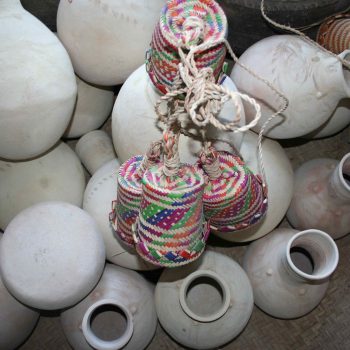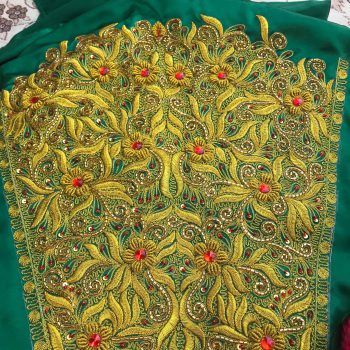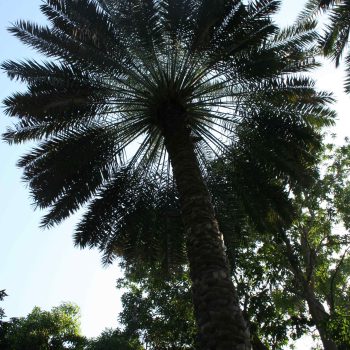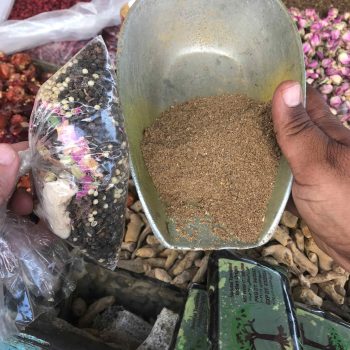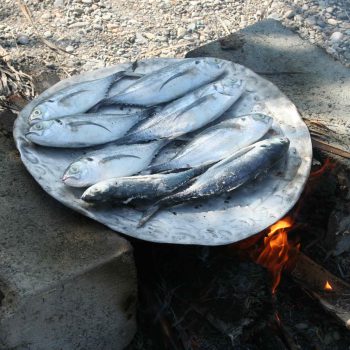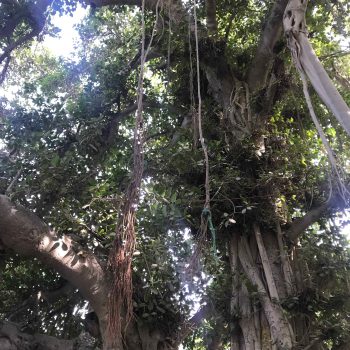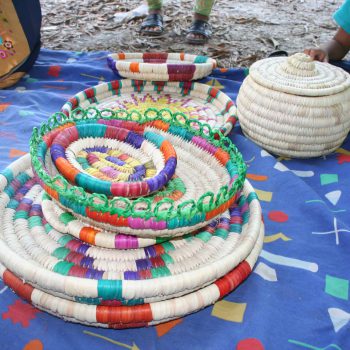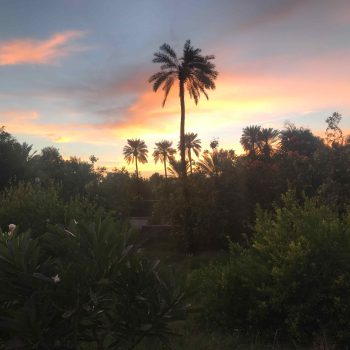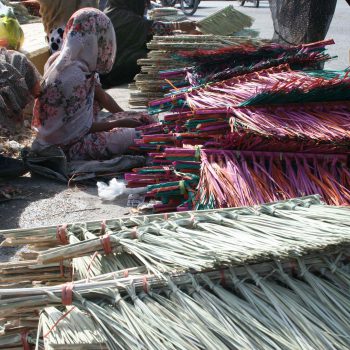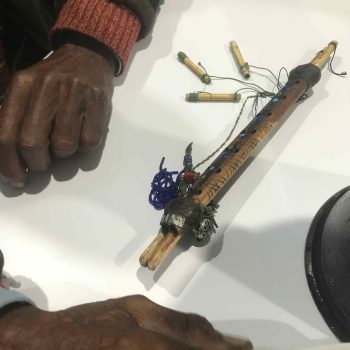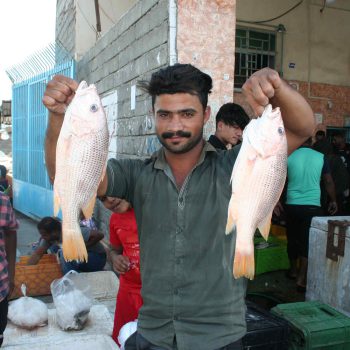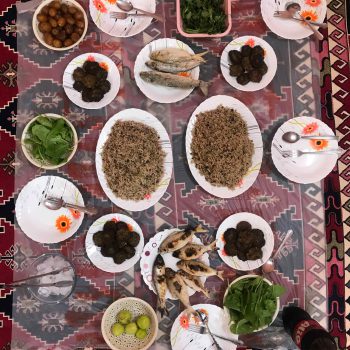Minab Travel Information
The township of Minab lies in the north of Hormoz Strait, and It has a mountainous terrain towards the north and east, whilst the plains are located in its central and western sectors. Minab experiences a warm and humid climate and its agricultural lands are irrigated by the Minab River. Its historical past mingles with that of the ancient city of Hormoz, which historians believe to be related to Ardeshir Babakan Sassanid. In the year 1000 AD. , one of the Sheikhs of Oman by the name of Mohammad took advantage of the discontentment of the inhabitants in respect to the ruler of the times, occupied Bandar-e-Hormoz. In 1300 AD. the Mongols invaded this city, thus forcing the Amir (governor) of Hormoz and its inhabitants to flee to the current Island of Hormoz. During the years 1793-1804, the Soltan of Oman, Soltan Ebne Ahmad came to power with the help of the Britain in ‘Gouatre’, and tried to refrain from disputes towards the Iranian rule, but at the same time tried to gain control over Bandar Abbas and Minab. Due to internal involvement, Aqa Mohammad Khan was unable to fortify his power in the south during this period. Thence the ruler of Oman took the seat in the areas of Qeshm and Hormoz. But in the year 1852 AD. a treaty was drawn up to the effect that the coastal lands, Islands of Iran along with Minab city be returned back to Iran.
How to get to Minab
- Train: There is regular train to Bandar abbas and when you reach there you can get taxi to minab .
- Flight: you can fly to Bandar abbas and then by car drive to reach to minab.
Weather in Minab
The best season to visit minab is oct- may . This implies the weather is mild around the year, but don’t be fooled: summers along the Makran Coast are tormenting hot and humid! This makes winter the best time to visit Minab and summer the worst.
The top 7 things to do and see in minab
Hazareh (Bibi Minoo) Castle
The only historical structure in present-day Minab town are the ruins of a structure called Hazareh Castle previously called the castle of Bibi Minoo. It is believed that Minab town was constructed by two sisters named Bibi Minoo and Bibi Nazanin. The castle sits on a height guarding the entrance to Minab and nowadays its main interest to the local people is for newly weds to complete a walk around the castle believing that the custom will ensure an enduring marriage and bring them good luck as a couple.
Minab Roof ( Bame Minab)
One attractive place you can go to during your stay in minab is Bam-e Minab. Fresh and mountainous weather would refresh your body and soul. Turn into a bird, fly into the place, and watch the amazing city from above like minab Dam and Palm Groves .
Tiyab port ( old hurmoz port)
This port located 26 kilometer west of minab , The history of Bandar Tiab (Old Hormuz Port) is completely connected with the city of Minab. In the distant years, Minab was closer to the sea and was mostly referred to as the port of Hormuz. The old port of Hormuz was located 10 kilometers southwest of the current city of Minab and 15 kilometers from the sea coast. The port of Hormuz is connected to the sea through a bay ( Khour). Hundreds of ships from all over Asia, especially India, China and Africa, have been unloading their commercial cargoes in Hormuz port. The oldest historical reference to the port of Hormuz is in the writings of one of Alexander the Great’s generals, named Narkheus, 325 years before Christ; He expresses his observations about the port of Hormuz as follows: A city of Abad by the river Aramis and on the coast of Hormuz and in the Kermania region. Narkheus is surprised by the greenness of the Mughstan (Minab) region and says: All kinds of trees can be seen there except the olive tree.
Tiyab port is one of the intact tourist attractions in the southeast of Iran, In addition to enjoying the natural scenery and seeing the mangrove forests and mangroves in Bandar Tiab International Wetland, tourists go on a boat ride along the 11 km length of the lagoon and watch all kinds of migratory birds among the mangrove trees. So far, 14 species of birds have been identified in the Tiab International Wetland, and this wetland is one of the most important native habitats and wintering sites for all kinds of birds, including great herons, Indian herons, great herons, coastal egrets, sharp-pointed sandpipers, and gray herons , Gilanshah and Kakai are considered. Don’t miss fishing & bird watching experiences in this port .
Minab Thursday market & traditional bazar
A local market is held in Minab every week on Thursday at which locals especially women gather to sell fresh vegetables, seafood and handicrafts like handmade burqas, wicker baskets, embroidery textiles, potteries and etc. According to historians, the antiquity of this local market goes back to 500 years ago, when the residents of each village in this area were required to provide only one good at the market. With colorful vegetables and products, and crowd of Minab locals busy with trading, Minab Thursday Market has a very vibrant atmosphere and is one of the most interesting bazaars of south of Iran. It’s easy to realize that women have a big role here. Not only in flaunting colorful chadors, but also in running the economy. They sell anything from bread and fruits to chadors, burqas, embellished trousers and fish jam!
Unlike the Iranian bazaars in big cities which tend to have a male dominant environment, here in Minab Thursday market, women were taking the lead. Although dressed up quite conservative to what we are used to and hidden behind colorful masks, they were assertive and showed no intimidation in working alongside men.
Sacred Fig Tree
Don’t miss visiting Sacred Fig Tree (Loor or Lool) in minab tour. This tree is from India and south Asia and has been brought to Persian Gulf from India. The green Loor or Lool is known as sacred fig tree. The reason to name this tree was a sacred fig tree that returns to Buda. The most famous of these trees returns to 288 B.C in Mahaboudi temple. Sacred Fig Tree (Loor or Lool) can be found in south cities of Iran like Bandar Abbas, Qeshm, Kish Island and Chabahar. Sacred Fig Tree (Loor or Lool) is the most beautiful in its kind with huge trunk and many roots. High roots and old skin of this tree which is hanging from its trunk, has made this tree special from the others. Sacred Fig Tree (Loor or Lool) which has made shadow like an umbrella, has too many branches rather than height. One of the highest rainforests is Sacred Fig Tree (Loor or Lool). The seeds inside of this tree fall on the trees or into the birds’ sludge. These seeds grow up and the roots go to the ground. Finally, fig tree turns to the main tree from the roots.
Minab palm Groves and Botanical Gardens
17% of world’s palm groves are located in southern and eastern cities of Iran, like Khuzestan, Bushehr and Bandar Abbas in the south and Sistan-Baluchistan, Jiroft and Bam in the in the southeast of Iran. In these cities, many people are busy with planting palm trees, which are considered as a very precious plant. Don’t miss an epic sunset in palm Groves when you are in minab.
Mango and Botanical Gardens are worth to see in minab. Abbassi Garden is home to various native, non-native, and endangered plant species.when you travel to minab don’t lose visiting this unique Gardens .
Handicrafts of minab ( Bahmani handicrafts village)
Remains of the past, traditions that are a way of life, arts and skills passed down from generations, and a distinctive literary ethos – Minab has many stories to tell.
The variety of local products of Minab is so great and attractive that it is impossible to return empty-handed.
List of 4 Most Amazing Handicrafts of Minab:
1.Local clothing and embroidered fabrics If you are a fan of southern costumes, this is a good place! The traditional outfit for women of Hormozgan province includes silky embroidered trousers, a patterned chador and in some cases a handmade ornamented burqa or mask. The chadors come in all kinds of colours and patterns. Some of them are even beaded which are used for formal gatherings and weddings. In Minab Thursday market and traditional bazar Also, you can find people selling embroidered fabrics separately in Minab villages !
2.Burqa ( The beautiful mask of the south of iran women)
3. Matting is the art of weaving or plaited strips of organic fibers into mats which are cool and suitable to the hot tropical climate. Raw material for crafting mattresses and basketry, which are dominantly the leaves of date palms, are prevalent in the region. Historians called palm tree as the queen of the trees. People’s lives and economic status have been dependent on palm tree sine the ancient times, and palm tree, from root to foliage, have many advantages for human beings. Any citizen of Minab has a piece of handicraft made from palm tree, even if it is so small. People believe that a palm tree is the breadwinner for the family instead of children. All parts of palm tree have been used as furniture in the past. Villagers used to cover the building and bridges by the trunk of the tree. The dry leaves are used to make sheds and the heart of the tree is used to feed domestic animals. All parts of a palm tree is used and is of such great importance its counting unit is a person.
4. pottery ( Jahle )
Pottery has existed in Minab since the 3rd millennium BCE (5000 years ago ), with recovered fragments validating a high level of craftsmanship and a diversity of forms, some of which are still used today. Jahle, the most prominent and beautiful pottery of minab is currently produced only in this region of the country . Examples of this particular form have been observed in countries located in East Africa. Due to the characteristic, special shape and other additives in clay mud (ash), this jar has an extraordinary efficiency in keeping water cool, the jar has preserved its ancient form for centuries, and it has always been the focus and interest of UNESCO.
“In six thousand years before Christ, the first signs of the use of kilns can be seen in the pottery industry, and discoveries indicate that in three thousand five hundred years before Christ, a simple pottery wheel that was moved by hand and Even now, its use is common in the villages of Shahwar (from Minab) and Kalpurgan (from Saravan).
This device, while being simple with high production capacity, is able to maintain its rotational continuity with one quick rotation and due to the weight of the plate, for about 10 minutes, and when the potter rotates again, this rotation continues again on the plate. Jahle is made in several stages. First, the potter starts making a long jar with a long neck. After going through several steps, with special skill and patience, it is made spherical with wooden spoons. At the end, the body of the jahle becomes so smooth and uniform that it is impossible to see the impact of the spoon. For baking, the prepared jahles are kept in the shade for one day and in the sun for three to four days, and then they are prepared to be transported to the oven. Jahle cooking ovens are also unique and in the form of two cups that are connected by the Qaida. The bottom part of the fire pit and the top part is the place where the jahle are arranged. Professor Abdullah Rahimi believes that only palm leaves should be used for the fuel of the furnace, and that energies such as oil and gas affect the smell and taste of the water inside Jahle. After being arranged in the upper opening of this kiln, the Jahles are covered by a pile of waste from the previous kiln and broken pottery. After 4 to 5 hours, the oven is turned off and it is left in the same way for a day, and then they take out the jahles. There are 2 Artists who produce jahle in minab .
Ostad Rahimi ( shahvar village )
Ostad fakhari ( hakami village )
Jofti Navazi
‘’Ney Jofti” is an indigenous and one of the oldest instruments of the Hormozgan province and one of the bases of traditional music of Bandar Abbass and Minab .
Where to Eat in Minab
There are several restaurants in Minab city but we suggest you to eat local foods at local accommodation . Given the closeness to the ocean, fish is a big staple on Minab. Make sure to try a grilled fish served with spicy sauce while you are there . The signature dish of south of iran is indeed the Ghalyeh Mahi made out of fish, herbs, and spices served with rice. A must-try while on the Persian Gulf . Other local foods like havari, fish kuku , Shrimp & rice ( Dopeyazeh) worth to taste .
Don’t forget to buy from locals mango pickles ( torshi) and date palm sap which people produce themselves moreover If you love seafood spices as a souvenir of this region. From the shops and markets of Minab, you can buy all kinds of spices in this region and give a southern flavor to your home food. You should not miss the opportunity to buy southern spices during your trip to Minab ; because after using these products, you will understand the real taste of spices.These spices are a combination of black pepper, red pepper, nutmeg, coriander, lemon powder, thyme, cloves, turmeric, curry, cinnamon and anise.
Where to Stay in Minab
There are a few hotels in minab ( Sadaf & Mehmansara ) and several local accommodation .
Moradi Garden
Ranjbar family Garden

